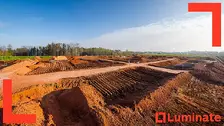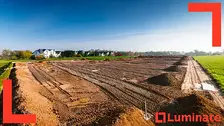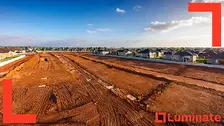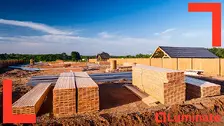Site Selection Criteria for Property Development: A Comprehensive Evaluation Framework
 By
Trent Bradley
·
10 minute read
By
Trent Bradley
·
10 minute read

Successful property development begins with selecting sites that offer optimal potential for profitable development while minimising risk exposure. Effective site selection requires systematic evaluation against multiple criteria that influence development feasibility, market appeal, and long-term investment returns. This comprehensive guide establishes a structured framework for evaluating development sites across all critical criteria that determine project success in New Zealand's complex development environment.
Table of Contents
- Primary Location Criteria
- Physical Site Characteristics
- Regulatory and Planning Assessment
- Market Demand and Target Buyer Analysis
- Infrastructure and Services Evaluation
- Financial Feasibility Criteria
- Environmental and Sustainability Factors
- Development Type Specific Criteria
- Risk Assessment and Mitigation
- Site Scoring and Comparison Framework
- Working with Site Selection Specialists
- Frequently Asked Questions
Key Takeaways
- Systematic site evaluation requires assessing location fundamentals (regional growth, transport accessibility, employment proximity), physical characteristics (topography, soil conditions, utility proximity), and regulatory frameworks (zoning compliance, consent pathways, infrastructure standards) across all development opportunities
- Sites with gentle to moderate slopes (1-15%), regular configurations enabling efficient layouts, and confirmed infrastructure capacity (water, wastewater, electricity) minimize development costs while maximizing design flexibility and lot yield potential
- Financial feasibility analysis must calculate acquisition cost reasonableness through residual land valuation, development cost predictability including 15-20% contingencies, and risk-adjusted return metrics (IRR, NPV, profit margins) under optimistic, realistic, and pessimistic scenarios
- Comprehensive risk assessment identifies regulatory risks (consent delays, policy changes), market risks (demand volatility, absorption uncertainties), construction risks (site conditions, contractor availability), and environmental risks (contamination, natural hazards) requiring mitigation strategies
- Weighted scoring systems enable objective site comparison by assigning relative importance to different criteria based on development type—residential prioritizes school zones and family amenities, while commercial emphasizes customer accessibility and catchment characteristics
- Sites aligned with urban development strategies, growth management policies, and planned infrastructure investment benefit from regulatory support and sustained market demand, providing more predictable development outcomes than locations conflicting with growth directions
Primary Location Criteria
Location fundamentals form the foundation of successful property development, influencing market appeal, pricing potential, and long-term value appreciation prospects.
Regional Growth Dynamics: Evaluate regional population growth, economic development, employment trends, and infrastructure investment patterns. Sites in regions experiencing sustained growth typically provide more predictable development outcomes and stronger value appreciation over time.
Urban Development Alignment: Assess alignment with urban development strategies, growth management policies, and infrastructure planning. Sites that align with planned urban growth directions benefit from infrastructure investment and regulatory support while avoiding policy conflicts.
Transport Accessibility: Analyze transport connectivity including road networks, public transport access, walking and cycling infrastructure, and commuting distances to major employment centres. Transport accessibility directly influences market appeal and pricing potential across all development types.
Employment Centre Proximity: Consider proximity to major employment centres, business districts, and emerging economic hubs. Sites with reasonable access to diverse employment opportunities typically experience stronger and more sustained market demand.
Lifestyle and Amenity Access: Evaluate access to lifestyle amenities including recreational facilities, natural environments, cultural offerings, educational institutions, and healthcare services. Quality amenity access enhances market appeal and supports premium positioning strategies.
Market Maturity and Stability: Assess market maturity including development activity, price stability, and buyer diversity. Established markets typically provide more predictable outcomes, while emerging markets may offer higher returns but carry greater uncertainty.
Physical Site Characteristics
Physical site attributes significantly influence development costs, design flexibility, and market positioning opportunities.
Site Size and Configuration: Evaluate whether site dimensions and shape enable efficient development layout while meeting regulatory requirements. Regular-shaped sites typically provide better development efficiency, though irregular sites may offer unique design opportunities.
Topographical Suitability: Assess slope, aspect, drainage patterns, and soil stability. Gentle to moderate slopes often provide optimal development conditions, while steep sites increase costs but may offer premium positioning through views or architectural interest.
Soil Conditions and Geotechnical Factors: Consider soil bearing capacity, drainage characteristics, contamination potential, and foundation requirements. Quality soil conditions reduce development costs and construction risks while supporting efficient site utilization.
Natural Features and Constraints: Identify existing vegetation, water features, rock outcrops, and other natural characteristics that may enhance development appeal or create design constraints. Natural features often provide unique selling propositions but may require specialist management.
Site Access and Connectivity: Evaluate existing access arrangements and potential for additional access points. Multiple access options provide design flexibility and often enable higher development density while improving emergency services access.
Utility Service Proximity: Assess proximity to existing utility infrastructure including electricity, water, wastewater, telecommunications, and gas services. Close utility proximity reduces connection costs and accelerates development timelines.
Regulatory and Planning Assessment
Understanding regulatory frameworks helps identify sites with favorable development potential while avoiding complex consent processes and regulatory obstacles.
Zoning Compliance and Flexibility: Analyze current zoning provisions including permitted activities, density controls, height limits, and design requirements. Sites with favorable zoning that supports intended development provide more predictable consent outcomes.
District Plan Alignment: Review district plan objectives, policies, and assessment criteria that influence consent processing. Sites that align with district plan directions typically experience faster consent processing and reduced regulatory risk.
Consent Pathway Complexity: Assess likely consent requirements including activity status, notification requirements, and assessment criteria. Sites enabling simple consent pathways reduce regulatory costs and timeline risks.
Heritage and Cultural Considerations: Identify heritage listings, archaeological potential, and cultural protection measures that may influence development options. Heritage constraints require specialist input but may provide unique positioning opportunities.
Environmental Protection Requirements: Evaluate environmental constraints including ecological protection, water quality, natural hazard management, and landscape protection measures. Environmental constraints often require mitigation but may enhance long-term development value.
Infrastructure Development Standards: Understand council infrastructure standards and contribution requirements that impact development costs. Areas with standard requirements typically provide more predictable development costs than locations requiring special provisions.
Market Demand and Target Buyer Analysis
Understanding target market characteristics helps select sites that align with buyer preferences while supporting optimal pricing and sales outcomes.
Demographic Profile Alignment: Analyze local demographics including age profiles, household composition, income levels, and lifestyle preferences. Sites that align with target demographic preferences typically experience stronger market demand and pricing support.
Housing Market Dynamics: Assess housing supply, demand patterns, price trends, and market absorption rates. Understanding market dynamics helps validate development assumptions and optimize product positioning.
Competition Assessment: Evaluate existing and planned competing developments including product types, pricing, and market positioning. Understanding competitive dynamics helps identify market gaps and differentiation opportunities.
Buyer Motivation Analysis: Consider primary buyer motivations including lifestyle preferences, investment objectives, affordability constraints, and timing requirements. Sites that address key buyer motivations typically achieve faster sales and premium pricing.
Market Absorption Capacity: Estimate realistic market absorption rates based on historical performance, current supply, and demand projections. Conservative absorption assumptions provide more reliable financial projections and risk management.
Price Point Optimization: Assess optimal price positioning based on market analysis, development costs, and target buyer affordability. Sites that enable competitive pricing while maintaining adequate margins provide superior development prospects.
Infrastructure and Services Evaluation
Comprehensive infrastructure analysis identifies development enablers and constraints while estimating upgrade costs and service delivery timelines.
Water Supply Capacity: Confirm water supply availability including pressure, flow rates, connection costs, and future capacity. Adequate water supply is essential for most development types and expensive to upgrade if insufficient.
Wastewater Treatment Options: Evaluate wastewater disposal options including council reticulation capacity, connection costs, or private system requirements. Wastewater constraints often represent major development obstacles requiring costly solutions.
Electricity Supply Adequacy: Assess electrical supply capacity, transformer requirements, and connection costs. Electrical constraints may limit development timing or require expensive network upgrades.
Stormwater Management Requirements: Understand stormwater management obligations including detention, treatment, and discharge requirements. Modern stormwater standards can significantly impact site layout and development costs.
Telecommunications Infrastructure: Evaluate telecommunications infrastructure including fibre availability, mobile coverage quality, and connection requirements. Quality telecommunications infrastructure is increasingly important for market appeal.
Road Network Capacity: Assess road network adequacy and potential upgrade requirements to accommodate development traffic. Sites requiring road improvements may face substantial infrastructure contribution costs.
Public Transport Accessibility: Consider current and planned public transport services including bus routes, rail connections, and cycling infrastructure. Public transport access enhances market appeal particularly for medium and high-density developments.
Financial Feasibility Criteria
Systematic financial analysis helps identify sites with optimal return potential while managing development risks effectively.
Acquisition Cost Reasonableness: Evaluate acquisition cost relative to development potential and market comparables. Avoid overpaying for sites based on optimistic development assumptions that may not be achievable.
Development Cost Predictability: Assess development cost predictability including site preparation, infrastructure, construction, and regulatory expenses. Sites with predictable costs enable more reliable financial projections and risk management.
Revenue Generation Potential: Analyze revenue potential based on market research, comparable sales, and product positioning opportunities. Consider multiple development scenarios to test revenue sensitivity and optimization opportunities.
Return on Investment Metrics: Calculate comprehensive return metrics including IRR, NPV, and profit margins under various scenarios. Higher-risk sites require higher return potential to justify investment commitment.
Cash Flow Profile: Evaluate cash flow timing including investment periods, funding requirements, and revenue generation patterns. Favorable cash flow profiles reduce financing costs and improve project viability.
Risk-Adjusted Analysis: Assess returns after adjusting for development risks including market volatility, cost variations, and regulatory delays. Risk-adjusted analysis provides more realistic investment comparisons.
Environmental and Sustainability Factors
Environmental considerations increasingly influence development success through regulatory requirements, market preferences, and long-term value considerations.
Natural Hazard Exposure: Assess exposure to flooding, coastal erosion, earthquake, landslide, or other natural hazards that may influence development costs, design requirements, and insurance availability.
Climate Change Resilience: Consider climate change implications including sea level rise, extreme weather resilience, and adaptation requirements. Climate-resilient sites typically provide better long-term value protection.
Ecological Value and Constraints: Evaluate ecological significance including native vegetation, wildlife habitat, and biodiversity values that may require protection or enhancement measures.
Contamination Assessment: Investigate potential contamination from previous land uses including industrial activities, fuel storage, or waste disposal that may require remediation before development.
Sustainability Opportunities: Identify opportunities for sustainable development including renewable energy, water conservation, sustainable materials, and green building practices that enhance market appeal.
Environmental Enhancement Potential: Consider opportunities to enhance environmental values through development including habitat restoration, water quality improvement, and landscape enhancement.
Development Type Specific Criteria
Different development types require tailored site selection criteria that address their unique characteristics and market requirements.
Residential Development Criteria: For residential developments, prioritize school zones, family amenities, community facilities, and neighbourhood character that appeal to target households.
Commercial Development Factors: Commercial developments require assessment of customer accessibility, competition proximity, signage opportunities, parking adequacy, and business catchment characteristics.
Industrial Development Requirements: Industrial sites require consideration of transport access, utility capacity, zoning compatibility, environmental constraints, and workforce accessibility.
Mixed-Use Development Considerations: Mixed-use developments need sites that can accommodate multiple uses while providing appropriate interfaces, access arrangements, and amenity relationships.
Subdivision Development Criteria: Subdivision sites require assessment of lot yield potential, infrastructure efficiency, market absorption capacity, and future building potential.
Risk Assessment and Mitigation
Comprehensive risk assessment identifies potential obstacles and develops appropriate mitigation strategies for each site evaluation.
Regulatory Risk Analysis: Assess consent risks including processing delays, condition requirements, appeals potential, and policy changes that may influence development feasibility.
Market Risk Evaluation: Analyze market risks including demand volatility, competition changes, price fluctuations, and absorption uncertainties that may impact development returns.
Construction Risk Factors: Evaluate construction risks including site conditions, contractor availability, material costs, weather delays, and quality control challenges.
Financial Risk Assessment: Consider financing risks including interest rate changes, lending conditions, cash flow variations, and refinancing requirements throughout development periods.
Environmental Risk Analysis: Assess environmental risks including contamination discovery, ecological protection requirements, natural hazard impacts, and climate change implications.
Stakeholder Risk Management: Evaluate stakeholder risks including community opposition, council relationships, professional coordination, and political changes that may influence development outcomes.
Site Scoring and Comparison Framework
Systematic scoring frameworks enable objective comparison of multiple sites while ensuring comprehensive evaluation across all relevant criteria.
Weighted Scoring Systems: Develop weighted scoring systems that reflect the relative importance of different criteria for specific development types and investment objectives.
Quantitative and Qualitative Assessment: Combine quantitative metrics with qualitative assessments to provide comprehensive evaluation that captures both measurable factors and subjective considerations.
Scenario-Based Analysis: Evaluate sites under multiple scenarios including optimistic, realistic, and pessimistic assumptions to understand performance under varying conditions.
Sensitivity Testing: Test site rankings sensitivity to changes in key assumptions including costs, revenues, regulations, and market conditions.
Comparative Analysis: Compare sites systematically using consistent criteria and methodologies to ensure fair evaluation and optimal selection decisions.
Working with Site Selection Specialists
Professional expertise in site evaluation and development feasibility provides significant value in identifying and evaluating optimal development opportunities.
At Luminate Finance, we understand that systematic site selection represents the foundation of development success and work closely with developers to evaluate opportunities against comprehensive criteria frameworks.
Our extensive experience across diverse development types and market conditions provides valuable insights into site characteristics that contribute to successful developments while identifying potential risks and obstacles.
We often participate in site evaluation processes, providing financial analysis, feasibility review, and risk assessment that helps developers make informed acquisition decisions while ensuring sites align with financing requirements.
Our comprehensive approach includes assessment of all relevant site selection criteria while providing practical guidance on acquisition strategies, due diligence processes, and development optimization.
Through our involvement in numerous development projects, we've developed deep understanding of site characteristics that consistently deliver superior development outcomes across different regions, development types, and market conditions.
Frequently Asked Questions
How many sites should I evaluate before selecting one for development?
Evaluate minimum 3-5 sites thoroughly using systematic scoring frameworks before making acquisition decisions, as comparative analysis reveals relative strengths and weaknesses not apparent from single-site evaluation. Experienced developers often screen 10-20 potential sites through preliminary assessment (location, zoning, size verification) before conducting detailed feasibility analysis on the top 3-5 candidates. This funnel approach balances thoroughness with efficiency—investing detailed due diligence resources only on sites passing preliminary screening. For larger projects (20+ lots or $5M+ developments), consider evaluating 5-10 sites with comprehensive feasibility to ensure optimal selection given significant capital commitment and multi-year development timelines.
What's more important: location or site-specific characteristics?
Location fundamentals trump site-specific characteristics in most circumstances—excellent sites in poor locations typically underperform mediocre sites in excellent locations. Regional growth patterns, employment accessibility, and transport connectivity cannot be changed and fundamentally determine market demand and pricing potential. However, site-specific characteristics significantly influence development costs and feasibility within good locations. Ideal approach prioritizes location first (identify strong growth areas with infrastructure capacity), then evaluates site-specific characteristics (topography, services, access) within those favorable locations. Never compromise location fundamentals attempting to compensate with superior site characteristics—challenging topography can be engineered, but weak location fundamentals cannot be remedied.
How do I verify infrastructure capacity before buying a site?
Obtain written confirmation from council infrastructure departments and utility providers rather than relying on assumptions or verbal advice. Submit formal service availability requests to council covering water supply capacity (pressure, flow rates, connection points), wastewater system capacity and connection costs, stormwater discharge requirements and approval process. Separately contact electricity network operators (Vector, Orion, local networks) confirming transformer capacity, connection costs, and upgrade requirements. Request responses in writing with specific capacity confirmations and cost estimates valid for 90+ days. Budget $500-$1,500 for professional infrastructure capacity reports from consulting engineers if dealing with complex sites or large developments requiring detailed capacity analysis beyond basic council confirmations.
Should I engage professionals before or after making an offer on a site?
Engage planning and engineering professionals for preliminary assessment before making offers on sites over $500,000 or requiring complex consents—their input costs $2,000-$5,000 but prevents acquiring sites with fundamental feasibility issues. Structure offers with appropriate due diligence conditions (typically 15-30 working days) allowing comprehensive professional investigation including geotechnical assessment, detailed planning review, infrastructure capacity confirmation, and financial feasibility modeling before unconditional commitment. For straightforward sites under $300,000 in familiar areas with simple zoning, preliminary self-assessment may suffice before offering, with detailed professional engagement during due diligence period. Never waive due diligence conditions attempting to strengthen offers—undiscovered site issues cost far more than losing opportunities to unconditional purchasers.
How do I compare sites objectively when they have different strengths?
Develop weighted scoring matrices assigning points (1-10 scale) across all relevant criteria with weightings reflecting relative importance to your specific development type and objectives. Example residential subdivision scoring: location fundamentals (30% weight), physical characteristics (25%), regulatory/zoning (20%), infrastructure (15%), financial metrics (10%). Score each site consistently, multiply scores by weightings, sum for total weighted scores enabling objective comparison. Include sensitivity analysis testing how scoring changes if certain criteria prove more/less important than initially weighted. Supplement quantitative scoring with qualitative assessment capturing factors difficult to quantify—community acceptance, council relationships, unique positioning opportunities. Final selection combines systematic scoring insights with experienced judgment on intangible factors influencing long-term success.
What red flags should immediately eliminate sites from consideration?
Absolute deal-breakers include: confirmed contamination requiring remediation exceeding 15-20% of site value, zoning requiring plan changes with council opposition to development, confirmed infrastructure capacity deficits requiring $30,000+ per lot upgrades, significant natural hazard exposure (100-year flood zones, active fault lines, unstable slopes) creating uninsurable risks, heritage protections preventing intended development density, access limitations with no feasible solutions, and acquisition prices exceeding residual land values by 30%+. Additionally eliminate sites where preliminary planning advice indicates consent refusal likelihood, where market absorption analysis suggests 5+ year sellout periods, or where title complexities (multiple owners, complex easements, unresolved boundary disputes) create insurmountable transaction barriers. Walking away from problematic sites saves far more than persisting with fundamentally flawed opportunities.
Ready to apply comprehensive site selection criteria with expert development finance support? Contact Luminate Finance today to discuss how our systematic evaluation expertise and development finance solutions can support your success through optimal site selection and development.

Trent Bradley
Trent Bradley is a New Zealand financial advisor specializing in property-backed finance and investment consulting. With over 26 years of experience running his mortgage broking business, he has helped wholesale investors access high-yield property-backed loan opportunities. For the past 12 years, Trent has led Luminate Finance, a New Zealand finance company dedicated to connecting investors with secure property investment solutions.

































.png?//48413319.fs1.hubspotusercontent-ap1.net/hubfs/48413319/Featured%20images%20(14).png&width=247&height=126&name=Featured%20images%20(14).png)




